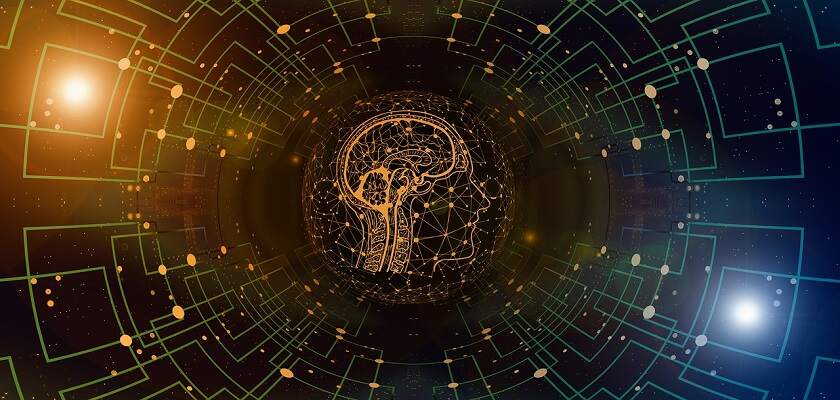Deep learning or DL is one of the most popular terms today. You will find it on its own or with topics that explain data science, machine learning, artificial intelligence, and so on. But what is deep learning? Let’s find out.
Summary
Here, in this blog, you are going to get a basic understanding of DL, which will include its meaning, how deep learning works, and what components play a role in successfully implementing it.
In addition to this, we will also discuss the real-world applications of DL so that you can relate to it and develop a better understanding of DL. In the end, you will learn about the challenges that AI and ML professionals face while performing deep learning tasks.
What is Deep Learning?
Deep learning is an area (subset) of machine learning that deals with artificial neural networks (ANNs), which are algorithms inspired by the structure and functioning of the human brain. These neural networks aim to imitate the activity of the human brain by “learning” from enormous amounts of data, albeit they fall far short of all of its capabilities.
While a single-layer neural network may produce approximate predictions, additional hidden layers can help to optimize and improve accuracy. DL, the fastest-growing field in machine learning, is a really disruptive digital technology that is being employed by an increasing number of businesses across markets to develop new business models.
How Deep Learning Works?
In the same way that the human brain is made up of neurons, (artificial) neural networks are composed of layers of nodes. The nodes at each layer are linked to nodes in neighboring layers. The number of layers in the network indicates its depth. In the human brain, a single neuron receives hundreds of impulses from other neurons of the brain.
Deep neural networks are made up of numerous layers of interconnected nodes, each of which improves and refines the prediction or categorization. Forward propagation signifies the progression of calculations via the network.
Backpropagation is a technique that uses algorithms such as gradient descent to calculate prediction errors and then alter the weights and biases of the function by traveling backward through the layers in order to train the algorithm.
What are the Types Of Neural Networks in Deep Learning?
1. Feed-Forward Neural Network
It’s the most basic type of neural network, with input data flowing in only one way, passing through artificial neural nodes and exiting through output nodes. The hidden layers may or may not be visible here, but the input and output layers are. The number of layers is determined by the function’s complexity. Forward propagation is unidirectional, but there is no backward propagation. Here, the weights are fixed.
2. Multi-Layer Perceptron
A feedforward artificial neural network, also called a multilayer perceptron (MLP), is a type of feedforward artificial neural network (ANN). It is among the simplest deep neural networks, which consist of a succession of completely linked layers.
Each subsequent layer is made up of a set of nonlinear functions that are the weighted sum of all the outputs from the previous layer (completely linked). An MLP is relatively difficult to create and maintain. Multi-layer perceptrons find use in complex classification. Speech recognition and machine translation are examples of complex classification.
3. Convolutional Neural Network
Another type of deep neural network is the convolutional neural network (CNN, or ConvNet). CNNs are widely used in computer vision. A convolution neural network has a three-dimensional architecture of neurons rather than a two-dimensional array, and the first layer in a CNN is a convolutional layer.
Each neuron in the convolutional layer examines only a small part of the visual field. The network decodes images in chunks. Moreover, it can repeat this process many times to complete image processing.
The next step is pooling and bidirectional processing, in which the output of the convolution layer is sent to a fully connected neural network for image classification. CNN machine learning models can capture the high-level representation of the data by using various convolutional filters.
4. Recurrent Neural Network
Another type of artificial neural network that uses sequential data feeding is the recurrent neural network (RNN). RNNs were created to solve the sequential input data time-series problem. The first layer is usually a feed-forward neural network, followed by a recurrent neural network layer, where a memory function remembers some information from the previous time step.
In this situation, forward propagation is used. It saves information that will be needed in the future. It can also be combined with convolution layers to increase pixel efficacy.
Top Deep Learning Applications
1) Virtual Assistants
Virtual assistants are one of the best outcomes of deep learning. Popular virtual assistants like Alexa, Siri, and Google Assistant leverage DL algorithms.
Each interaction with these assistants allows them to learn more about your voice and accent, providing you with a second human connection experience. They learn to understand and carry out instructions by analyzing natural human language.
2) Online Streaming
Netflix and Amazon are developing their deep learning models in order to deliver a tailored experience to their viewers by creating personas that factor in viewing preferences, time of access, history, and other factors.
3) Image Coloration
DL has now enabled the addition of color to vintage black-and-white photos. Deep learning in image processing allows computers to learn about colors and build algorithms that allow them to fill color, similar to how the neural nets in the human brain do.
4) Self-driving Cars
The technology of self-driving automobiles is a stunning characteristic of the automobile industry that has caught everyone off guard. Artificial neural networks are being used to create cars in such a way that they can function autonomously. With so many businesses working toward this goal, cars are likely to run on the streets without the need for human intervention.
5) Image Recognition
Deep learning is used to recognize images based on places, faces, a group of people, events, dates, and so on in photographs. To find a certain photo in a library, state-of-the-art visual recognition algorithms with various layers of recognition from basic to advanced are required. Deep neural networks for large-scale picture visual recognition are growing in this field of digital media management.
6) Personalization
Every platform is now attempting to deploy chatbots to deliver personalized experiences with a human touch to its visitors. DL is assisting e-commerce behemoths such as Amazon, eBay, and Alibaba in their efforts to give seamless tailored experiences in the form of product recommendations, personalized packages, and discounts, which results in making huge revenue during the holiday season.
7) Adding Sound to Silent Movies
Convolutional neural networks and LSTM recurrent neural networks are used to synthesize sounds to accompany silent videos. A deep learning model chooses to match video frames with a library of pre-recorded sounds to find suitable noises for the situation. This assignment is completed with the help of training from a lot of videos.
Challenges in Deep Learning
- A large amount of data is required to train a data set for a deep learning solution. The machine must be equipped with sufficient computing capacity to do a task that involves solving real-world problems. Data scientists use multi-core high-performance GPUs and comparable processing units to improve efficiency and reduce time consumption. These processing devices are expensive and use a lot of electricity.
- Deep learning models are among the most data-hungry in the machine learning sector. They’ll need a lot of data to attain their peak performance and provide us with the level of service we anticipate. However, having this much information isn’t always straightforward.
- “Deep” in deep learning refers to its design rather than the amount of comprehension that these algorithms can currently produce.
- DL networks have implications in cybersecurity. Taking a step back to the networks themselves, and considering the proclivity for these models’ outputs to change after input changes, these networks may be subject to malicious attacks.
Conclusion
Deep learning has many uses. Companies are trying to create easy and efficient ways of doing things using deep learning algorithms. You have come across several applications of DL in the blog that would let you understand the speed at which deep learning is expanding. Today, industries across markets are leveraging DL.
Alongside its many advantages, DL also has some disadvantages like cost and model overfitting. Nonetheless, the reliance of humans on DL-powered AI devices to complete their day-to-day tasks will increase in the future. We hope that this article helped you understand deep learning better.
What do you think the future holds for DL? Let us know in comments below.

Hi! I am Shekhar, a professional web & mobile app developer with expertise in MEAN Stack, Next.js, React.js, and React Native. Being interested in working with different IT technologies, I always look forward to learning something new and challenging. Along with JavaScript, I also know several other programming languages, including Python and TypeScript.

